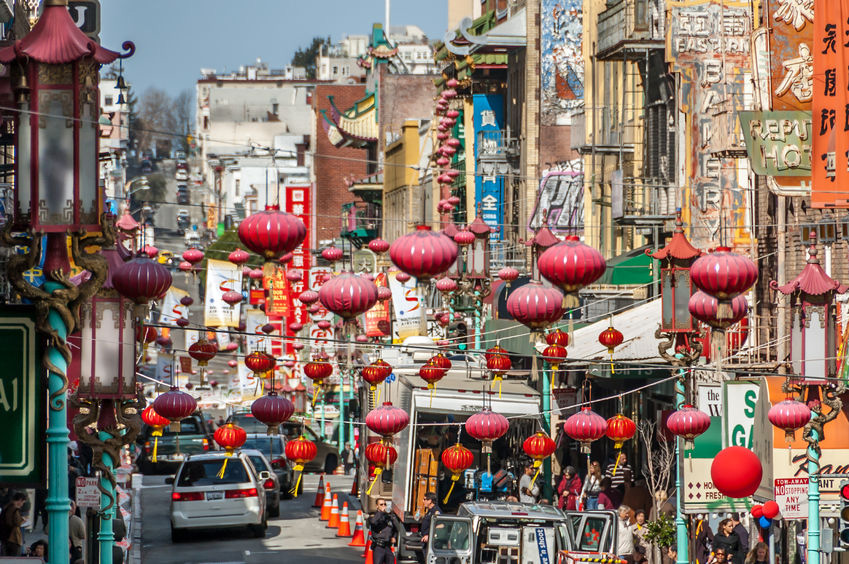
Chinese immigration was so extensive in the 1800s that many major cities in the United States, the United Kingdom, and Canada can claim an authentic Chinatown. However, only San Francisco can claim the title as the oldest and largest Chinatown in North America and outside of Asia. The greatest push of immigration came in the 1850s when 25,000 Chinese citizens made their way to America seeking better work opportunities and an improved quality of life for their families.
Chinese nationals who made their way to San Francisco primarily hailed from the regions of Zhongshan, Taishan, and the mainland China province of Guangdong. They arrived just as the California Gold Rush was getting underway. The timing of their arrival meant that many Chinese in America worked in gold mines throughout the northern part of California. Others worked in the garment industry while still others helped build the railroad infrastructure that helped push Westward expansion forward in the United States.
Even though they worked hard and primarily congregated in an area of San Francisco now called Chinatown, early Chinese immigrants struggled with poverty and discrimination. Employers took advantage of the fact they were trying to establish their own new households while still sending money to family remaining in China. That meant that the Chinese in America were willing to work longer hours for less pay that those already established here.
The Chinese Exclusion Act and Difficulty Finding Acceptance
As the Chinese continued to immigrate to America, and particularly San Francisco since it’s a port city of entry, some people began to express resentment and disdain towards them. They put pressure on government officials to limit Chinese immigration for this reason. This led to the passing of the Chinese Exclusion Act of 1882.
Signed by President Rutherford B. Hayes, the new law prevented the immigration of new Chinese laborers for 10 years. It also required people of Chinese descent to carry a certificate that stated whether he or she was a laborer, diplomat, scholar, or merchant. Those already in the country found that they didn’t feel welcome anywhere except the Chinatown region of San Francisco.
The 1906 Earthquake
In 1906, San Francisco experienced an earthquake and subsequent fires that had a devastating effect on Chinatown. It not only destroyed thousands of homes and business, it killed many Chinese living in America as well. Because the fires destroyed immigration and birth records, some Chinatown residents took advantage of this to claim themselves as American citizens. They sent for their family members still living in China to join them in the United States. However, the Chinese Exclusion Act meant that many of them faced detainment for weeks, months, or years in harsh conditions on Angel Island.
San Francisco’s Chinatown Today
Today, the city’s Chinatown occupies 30 blocks with its well-known gate at the intersection of Bush Street and Grant Street. It is home to many authentic Chinese restaurants, specialty stores, bars, nightclubs, places of worship, and bakeries. The Tin How Temple is one of its most popular attractions. People come from all over the world to see America’s largest authentic Chinatown.






 We are all about travel and lifestyle over here at Pacific Voyagers. I’m Jen and this is my blog, although you will see a lot of posts written by my blogging dream team on topics like travel, life, beauty, home, budgeting and much more.
We are all about travel and lifestyle over here at Pacific Voyagers. I’m Jen and this is my blog, although you will see a lot of posts written by my blogging dream team on topics like travel, life, beauty, home, budgeting and much more.







